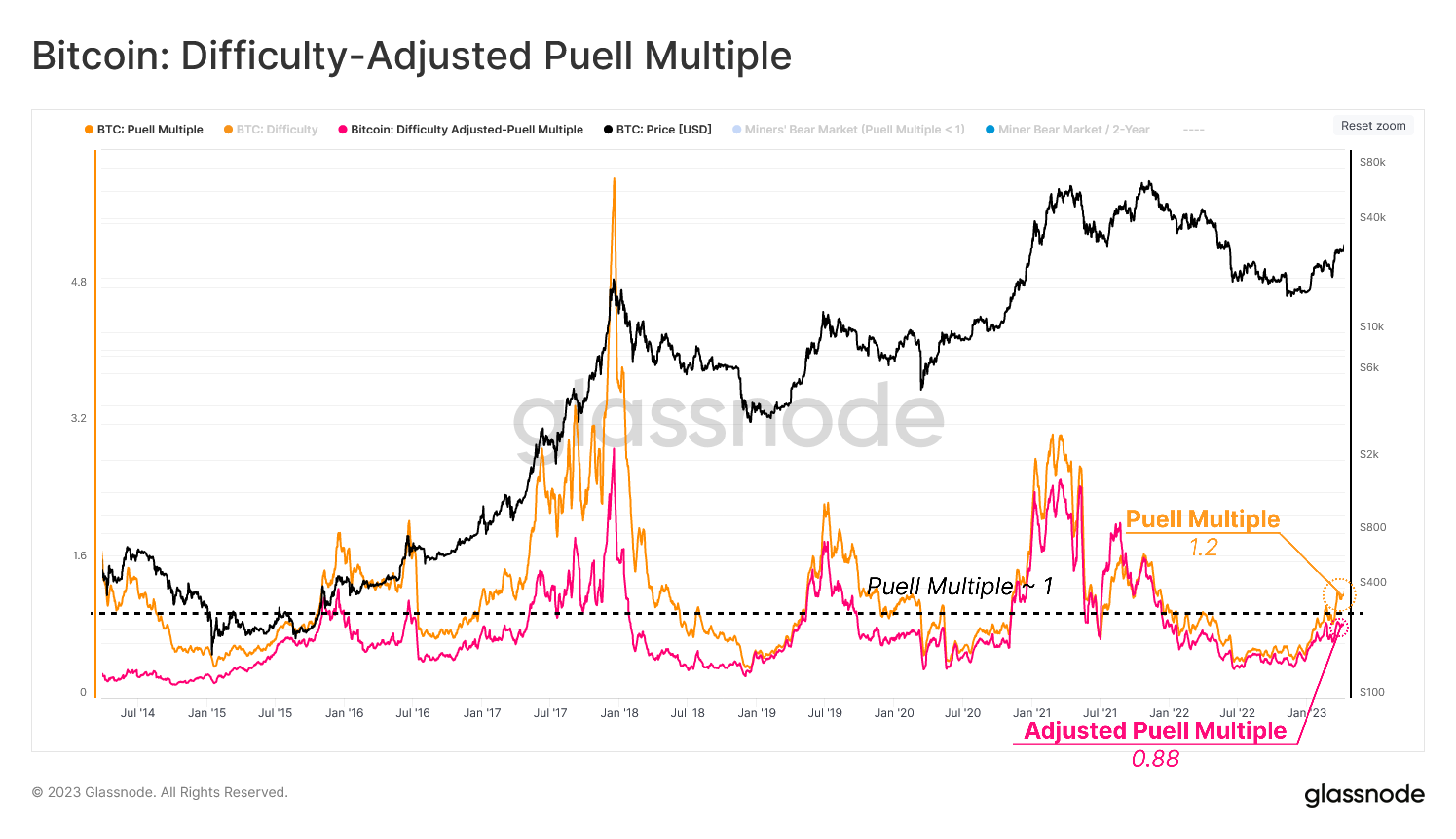The Bitcoin difficulty-adjusted puell multiple has been below one recently, here’s why this may suggest that the BTC miners are still under pressure.
Bitcoin Difficulty Adjusted Puell Multiple Is Yet To Break Above 1
According to a researcher at the on-chain analytics firm Glassnode, miners are still earning around 12% less than the average for the past year. The indicator of interest here is the “puell multiple,” which measures the ratio between the daily Bitcoin miner revenue (in USD) and 365-day moving average (MA) of the same.
When the value of this metric is greater than one, it means the miners are currently making more than their average for the past year. During such periods, miners generally find mining to be profitable.
On the other hand, values below this threshold imply the miner revenues are below the yearly average, possibly suggesting that this cohort may be coming under pressure.
There is an issue with the puell multiple, however, and it’s that it only depends on the price of the cryptocurrency. The metric does not take into consideration another important factor for the miners: the mining difficulty.
The mining difficulty is a built-in feature of the Bitcoin blockchain that decides how hard miners would currently find it to mine blocks on the network. This concept exists because the BTC blockchain aims to keep the block production rate (or more simply, the rate at which miners handle transactions) at a constant value.
When the network hashrate (a measure of the total computing power connected to the chain) goes up, miners are able to hash blocks faster. But as the chain doesn’t wish for this to happen, it increases the difficulty to slow down miners just enough to get them back to the desired pace.
Because of the difficulty’s existence, revenues for individual miners shrink whenever the hashrate goes up. This is due to the fact that the block rewards always remain the same (except for during halving events, where they are halved), meaning that if more miners connect to the network, the individual shares of everyone involved become smaller.
The “difficulty-adjusted puell multiple” is a modified version of the indicator that provides a more realistic representation of the situation of the miners, as it accounts for the mining difficulty.
Here is a chart that displays the trend in this metric over the last several years:
The value of the metric seems to have been below one recently | Source: Glassnode on Twitter
As shown in the above graph, the Bitcoin puell multiple crossed above the one mark earlier in the year when the ongoing rally in the asset’s price started. Currently, this indicator has a value of 1.2, suggesting that miners as a whole are making notably more than the yearly average.
The difficulty-adjusted version of the metric, however, is still below one and has been for the entire bear market, despite the price observing a significant surge recently.
At the current level of 0.88, miners are making 12% less than the yearly average, implying that they may still be under some pressure right now, although not as severe as during the bear market lows.
BTC Price
At the time of writing, Bitcoin is trading around $30,400, up 9% in the last week.
Looks like BTC has sharply surged | Source: BTCUSD on TradingView
Featured image from Brian Wangenheim on Unsplash.com, charts from TradingView.com, Glassnode.com















![Bitcoin [BTC], Gold, S&P 500 and a case of the widening correlation](https://www.blocpress.com/wp-content/uploads/2023/03/chart-1905225_1920-1000x600-120x86.jpg)



